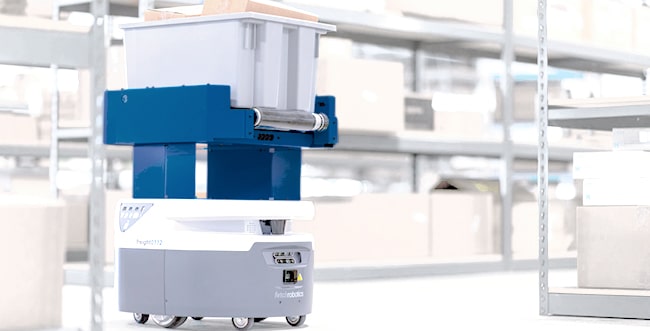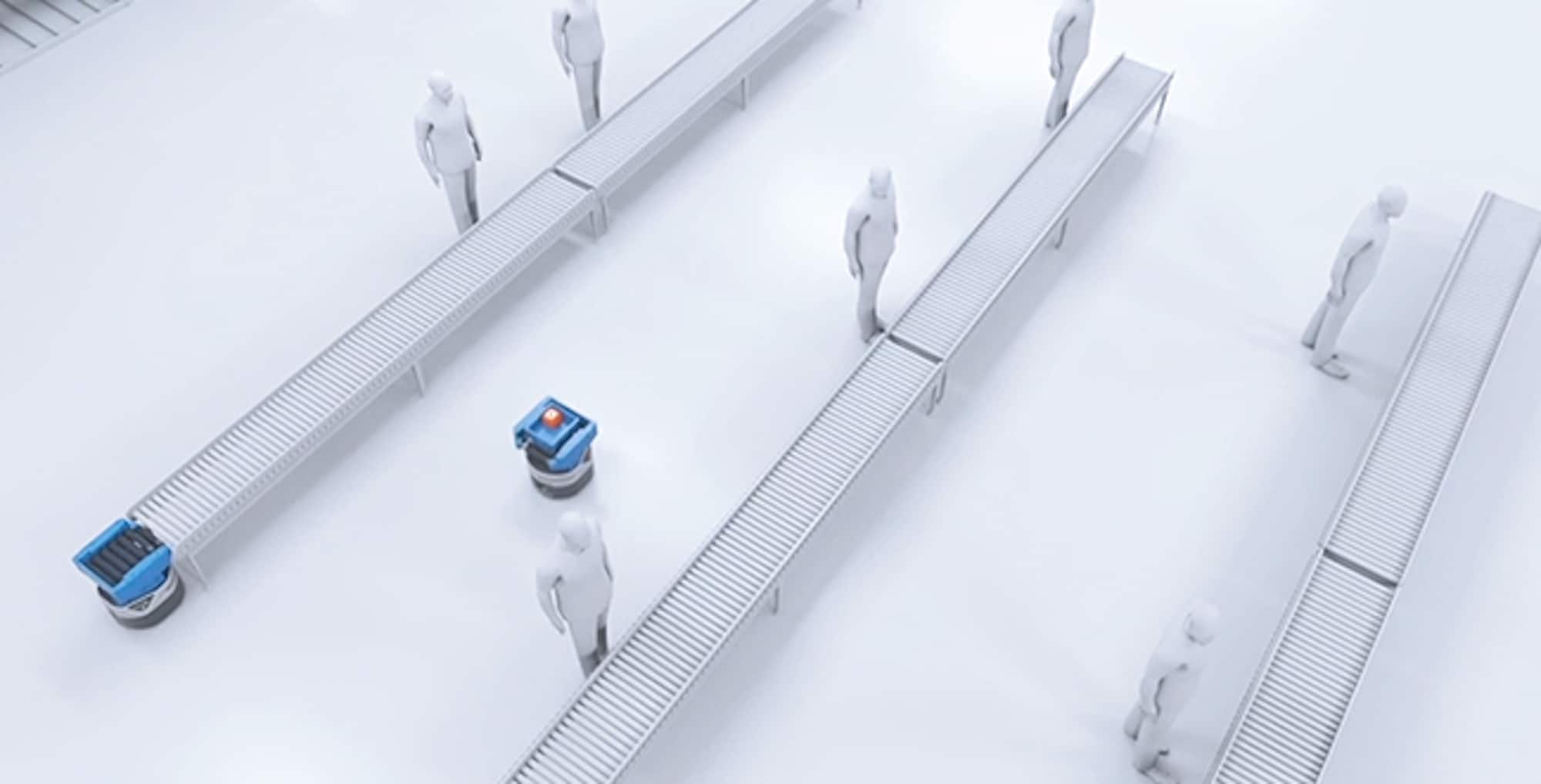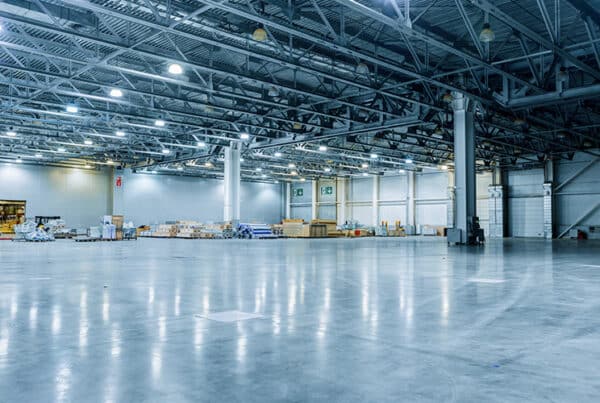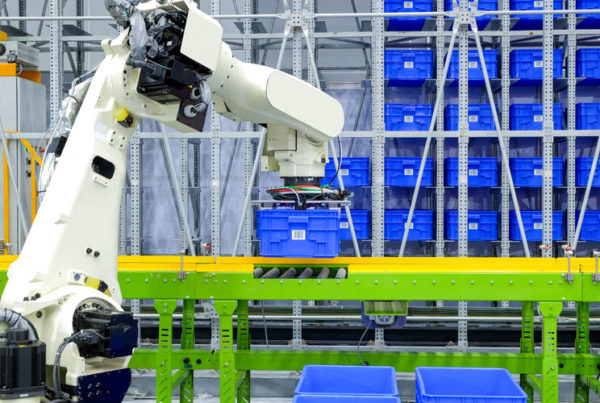Before March, 2020, automation in material handling had been on a slow rise for decades. Serious players were making investments both in infrastructure and research, but in most industries automating was a game of incremental gains. The workforce had been getting the job done, and the pace of automation was largely determined by its ROI when compared against an already existing system that was largely adequate.
However, among the dramatic, near-instant changes wrought by COVID-19 was an equally sudden unpredictability in the workforce. Regulations surrounding the disease affected everything from the times people can show up to work to the directions needed for them to walk through a facility, and specific instructions for how to distance themselves from their coworkers.
At the same time, lockdown orders at the municipal, state, and even federal levels have changed how people live their lives. The closing of schools and daycares have left once-reliable employees scrambling to balance their work and home lives. Public transit has become less certain as commuters consider their ability to physically distance from each other, and transit workers threaten strike and mass call-ins because of unsafe work environments. And fevers that in 2019 would likely have been ignored are now cause for 14-days of quarantine.
One takeaway for leaders in many industries – including material handling and fulfillment – is that over-reliance on human labor in a global economy is a risk.
Last year, a tally of the benefits of automation would include increased efficiency and accuracy, improved safety, and lowered costs.
In 2020, automation is seen as the way to quickly bring facilities back online after a COVID-induced shutdown or slowdown. In extreme cases, facilities are using automation to keep their operations moving even in the absence of a workforce.
More typically, automation is supplementing the workforce in new ways. New demands for physically distant work spaces often means that the critical mass of labor needed to maintain the required speeds and volumes can’t be met. Using automation to fill these gaps – in both the literal and figurative sense – allows facilities to continue operating cost effectively.
According to Material Handling & Logistics, many CXO’s who haven’t already integrated automation will begin accelerating their plans to invest in automation and robotics, despite potential declines in revenue caused by the pandemic.
Work shortages – an old problem with some new twists
As early into the pandemic as April 5, 2020, at least 50 amazon warehouses were experiencing outbreaks at their facilities, leading workers across the country – and even globally – to threaten strikes and stage walkouts. Companies from industries as wide ranging as Walmart and FedEx to meat and poultry processing have experienced similar concerns.
While work shortages are nothing new in the material handling industry, the novel coronavirus has changed the view stakeholders have of investments in automated technologies. Their calculation used to be, “How much overtime, how many accidents, and how many mistakes will this automated solution save me?”
Now, decision makers are asking, “How will this solution minimize the risk of an outbreak at our facility, during COVID-19 or the next crisis, while keeping our operations moving forward?”
The right tool for the job
In material handling, the immediate reaction to the coronavirus was a contradiction of needs. To slow the pandemic, much of the economy stopped overnight, but the demand increased for internet shopping and direct-to-consumer shipping. At the same time that the workforce was being told to keep physically distant, those in the fulfillment industry also needed to work more and faster than ever to meet the sudden demand.
To square this circle, companies that had already invested in automation looked at how it could be redeployed to help with the logistical changes COVID-19 brought. And companies not yet heavily invested in automation began looking for answers that are versatile enough to help them not only through the current crisis, but also to better adjust to the next one.
Imagine a robot designed to put rivets into car doors. Very likely, it can be reprogrammed to put more or fewer rivets into a car door. Programming it to put more rivets into more car doors may solve some work shortage issues and help workers physically distance.
But if what you need is a machine that can restock those rivets or move that car door or interact with something besides rivets and car doors, then the rivet-applying robot is going to be of limited help.
While there is still a value in task-specific machines, the importance of a versatile system has been exposed.
A company that invested in AGVs and AMRs, for example, can now reprogram these free-roaming machines to meet their business’s new demands. Something as simple as shuttling items that two workers used to hand off to each other can allow the overall system to maintain its efficiency while the workforce follows new laws and company policies.
AGVs, AMRs, and “cobots” (robots designed to work collaboratively with people) are equipped with a sophisticated array of sensors that are responsive enough to react to changes in the environment that comes with working around people – for example, Aethon’s AMRs are able to operate in a busy hospital environment delivering medications, testing equipment, linens, lab specimens, and more, while using less manpower.
In manufacturing, retail, and order fulfillment, smart cobotics such as these are being used to clean and sanitize floors, maintain the necessary physical distance between workers, and even interact with customers.
Applying the right automation to the appropriate task proved to be a sound investment in normal times. During the pandemic, it’s proven to sometimes be the difference between “lights out” and a “lights out operation.”
To know which automation is best for what purpose means being able to refine the distinctions between them. It isn’t enough for a CEO to look at the pandemic, decide it’s time to automate, and start investing in systems.
Getting the best return on that investment means finding the right tool for the right job. The most efficient way to do that is to work with experts in the material handling industry who know the ins and outs of these systems, and can help integrate them intelligently into a facility’s existing infrastructure.

The RollerTop from Fetch Robotics.
Smart robotics equals clever business
AMRs and AGVs are only two examples of the many kinds of solutions businesses are looking for today – solutions that take as much advantage as possible of machine learning, cloud computing, and the industrial internet of things.
Because order picking is as much as 55% of a warehouse’s operational budget, it’s long been a focus for automation. Outside of expensive Automated Storage and Retrieval Systems (AS/RS), fully automated picking has so far been unreachable.
However, advances in machine learning and the internet of things are quickly bridging this gap, while at the same time making employees safer.
For example, facilities equipped with something as simple as automatic barcode labelers and scanners are now taking advantage of reduced touchpoints for those tasks, and increased physical distancing in zones where those tasks are required.
But the benefits to these systems don’t end there. Facilities with something as simple as an automated labeler are now primed to scale their systems to include automated sortation, palletization, and even loading.
Automated picking, while still a challenge for many industries, is also reaping the benefits of machine learning. End-of-arm tools are being created that are capable of interacting with more variety in sizes, shapes, and delicacies than ever before. While they still aren’t capable of being used in every environment, the spaces in which they can be used are growing.
What this means for material handling is that industries that once required human dexterity – such as grocery and in particular produce – can increasingly include automated solutions in their processes.
There is no one solution for every facility. But for every warehouse, there are automated solutions that can increase physical distancing and reduce touch points while adding accuracy and saving labor.
Not “lights out” logistics, but collaborative robotics
If some automation is good, it might be thought that more is better. Taken to the extreme, the obvious result is the adoption of “dark” or “lights out” warehouses – warehouses that don’t need any human interaction to operate. Certainly, some businesses have adopted this philosophy.
However, most facilities won’t be able to operate without people. The tasks they need performed are too complex and require too much creativity, decision-making abilities, and fine motor skills.
At the same time, one of the effects of COVID-19 has been to bring to everyone’s attention the importance of the supply chain in a global economy.
The near future of automation will be to improve the stability, durability, and health of supply chain logistics. Solutions will be in high demand that can modify workflows and augment the labor force – taking over repetitive, physically difficult, but non-value adding jobs such as stacking freight, tagging boxes, and even cleaning and sanitizing floors.
All of the old, pre-COVID considerations for automation still apply. Automated solutions still improve efficiency and accuracy, reduce costs, and improve safety. Added to that list, however, is resiliency – the ability to continue operating even in the face of a global pandemic.





